
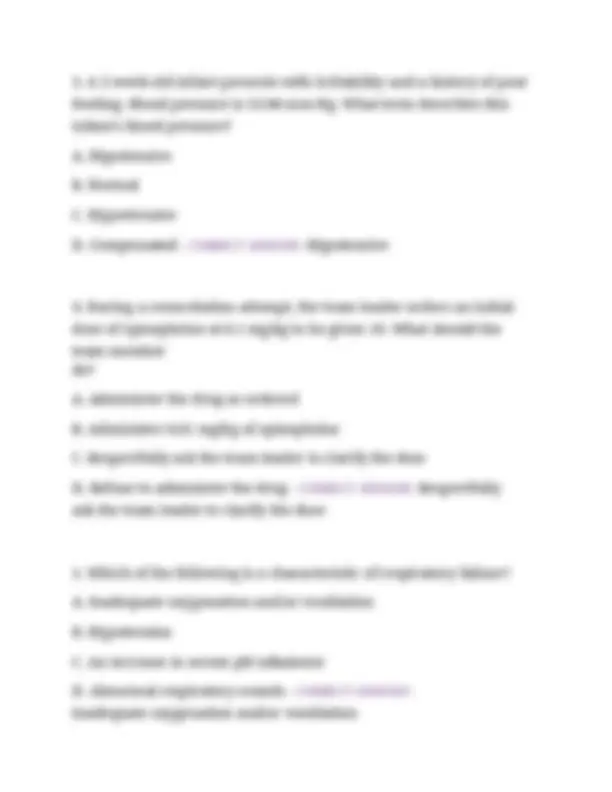

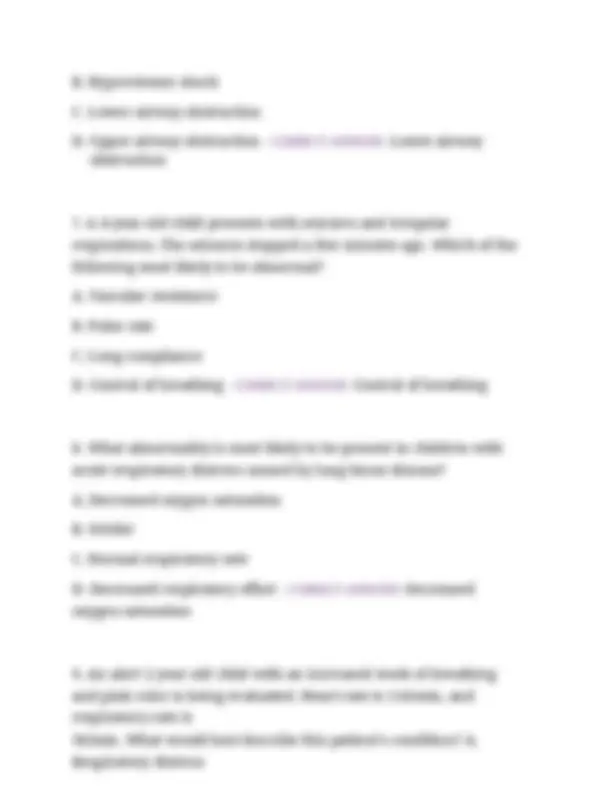

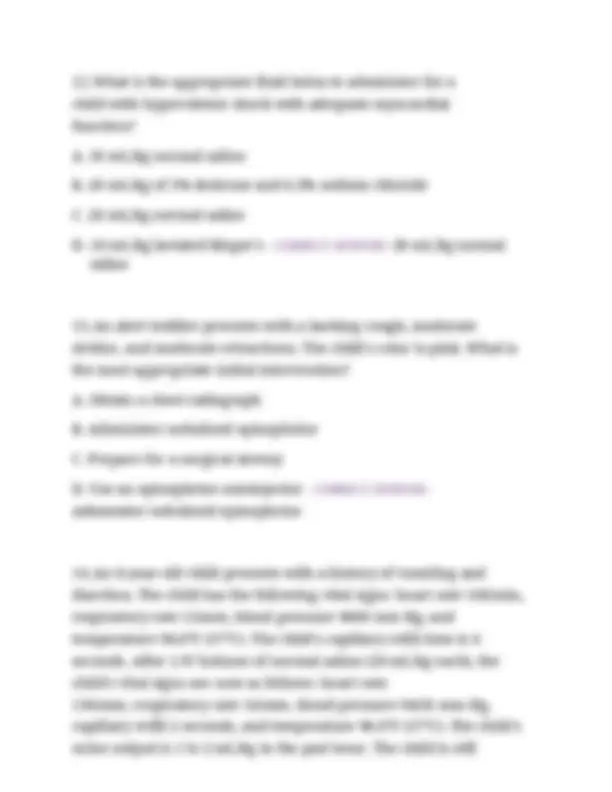
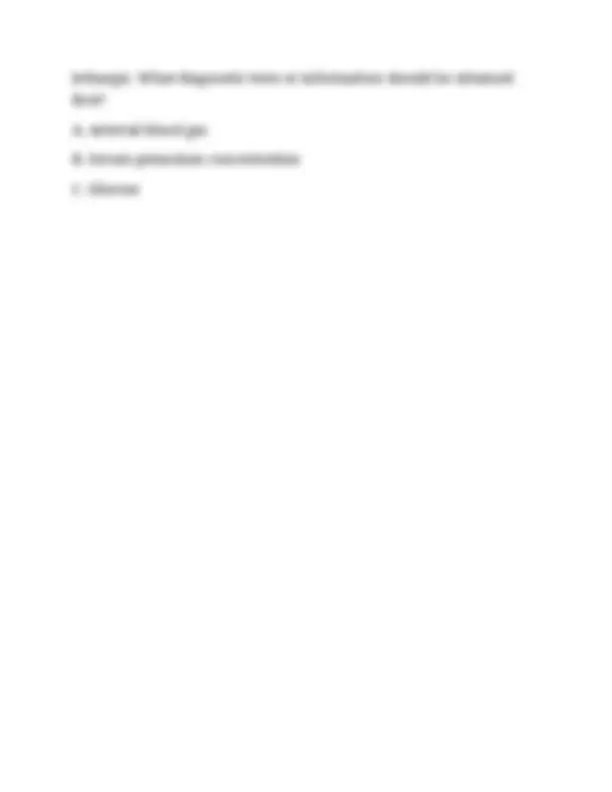
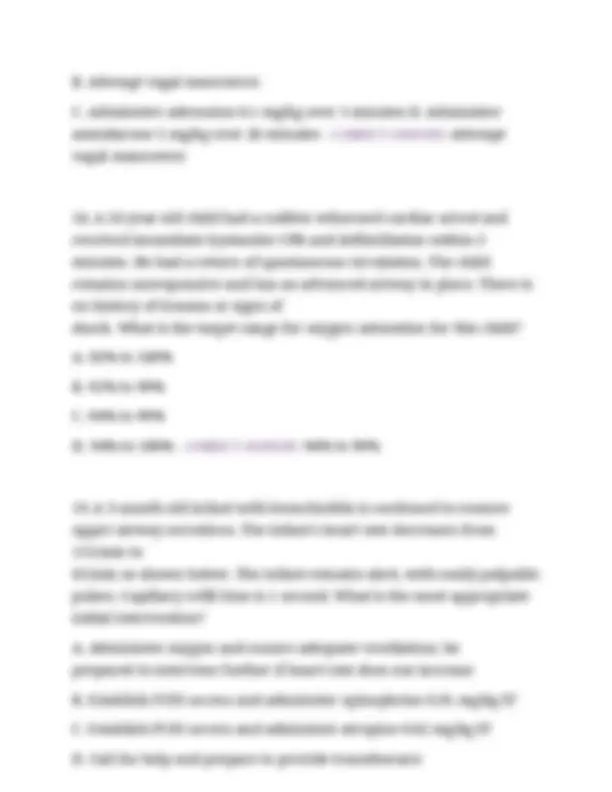

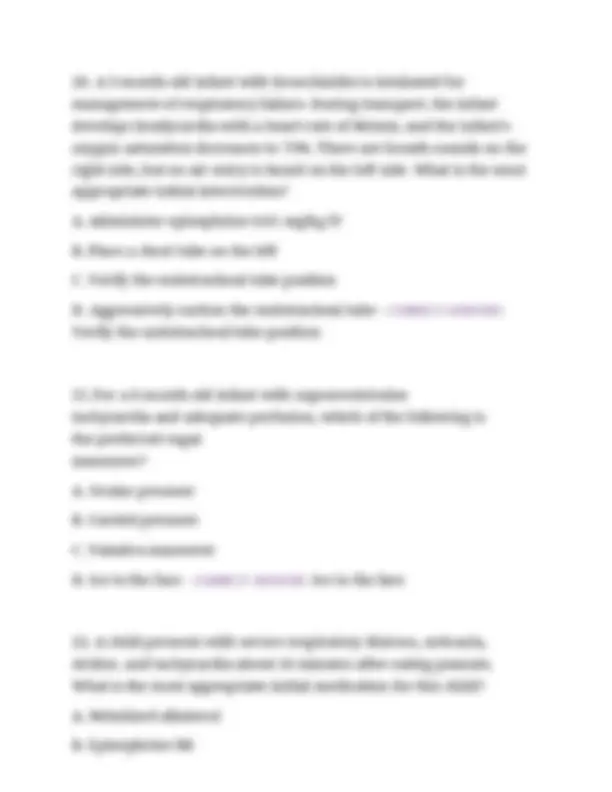

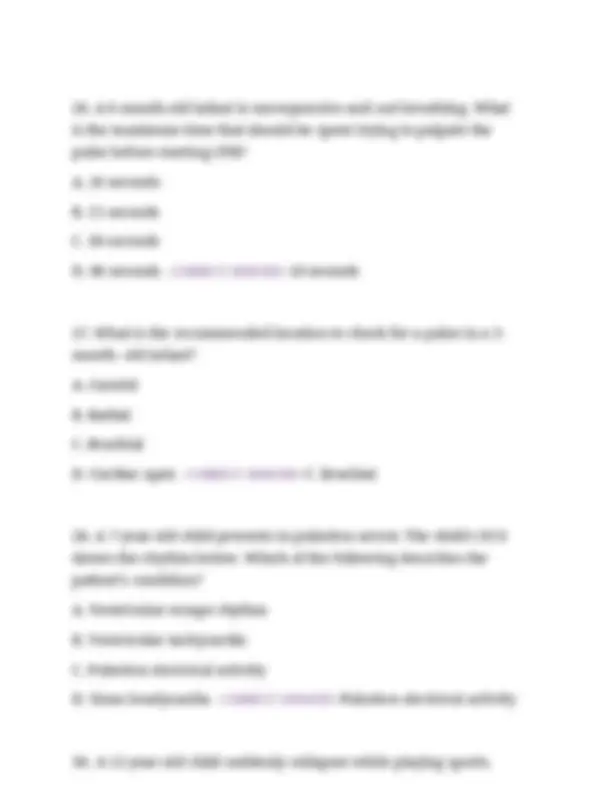

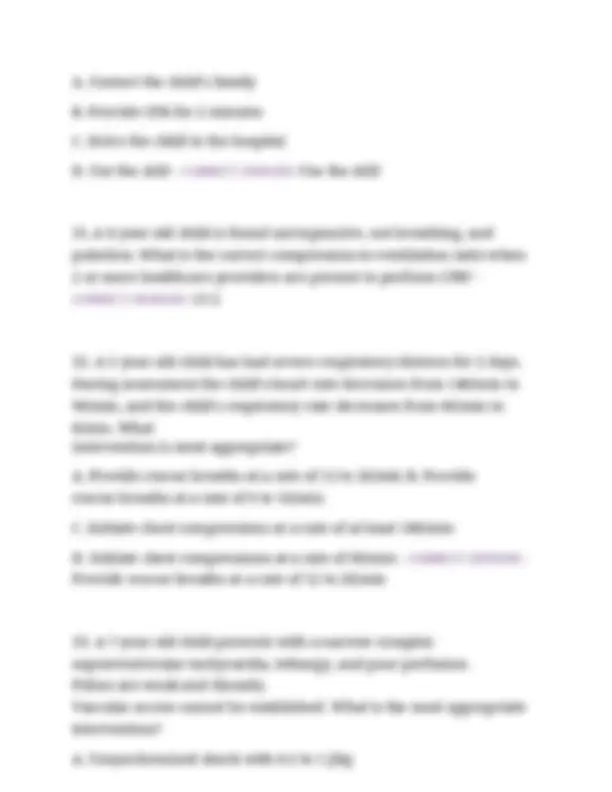

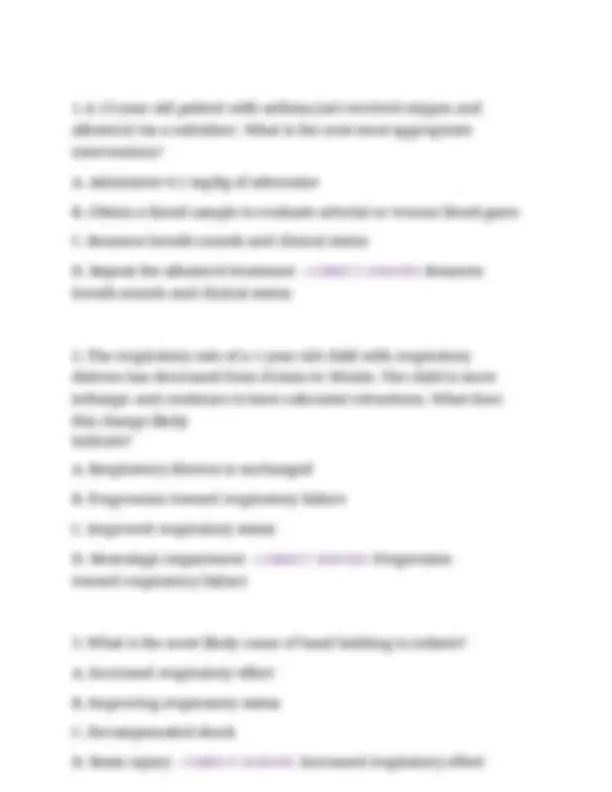
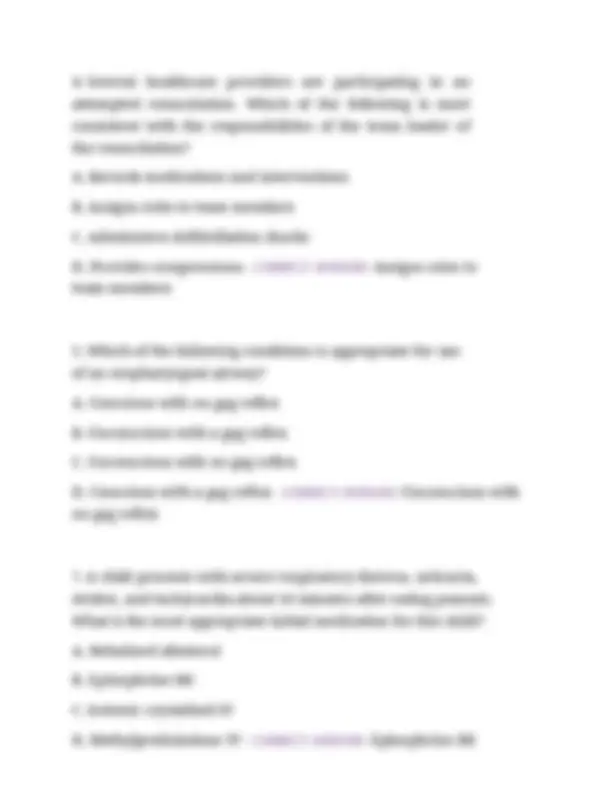

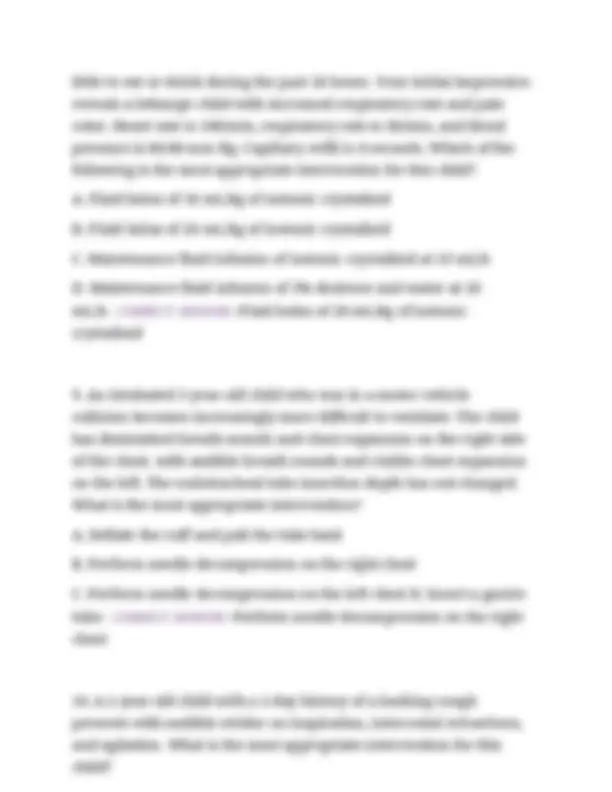

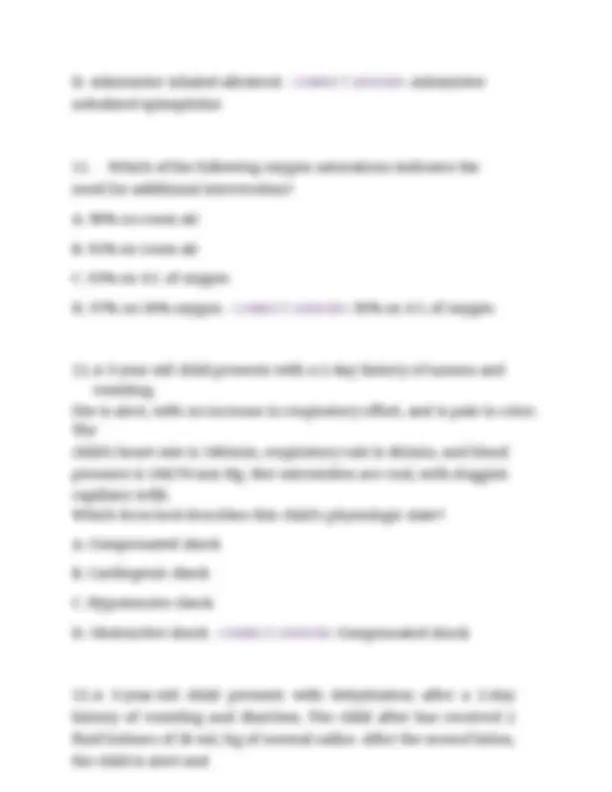

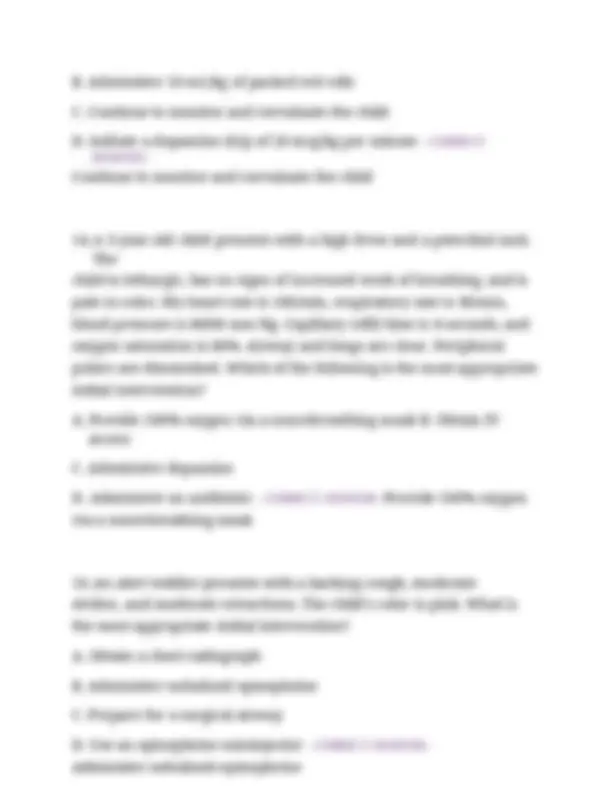
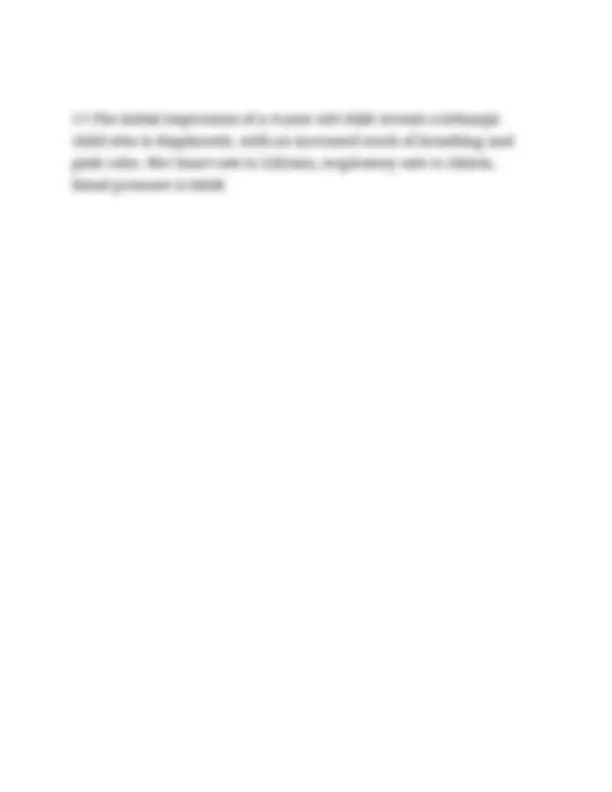
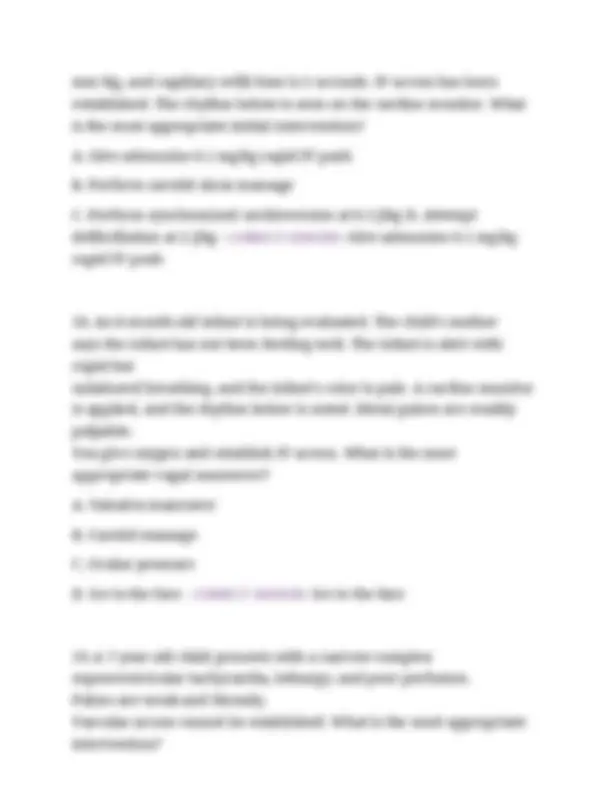
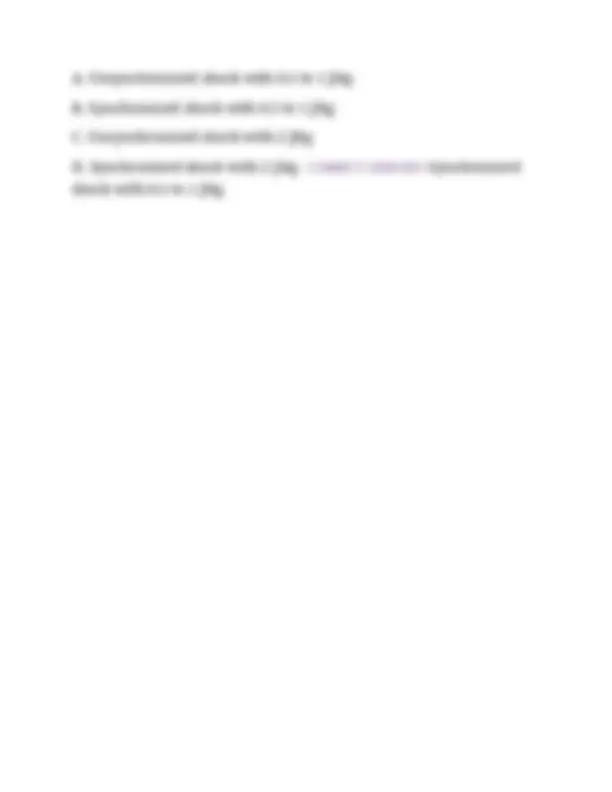
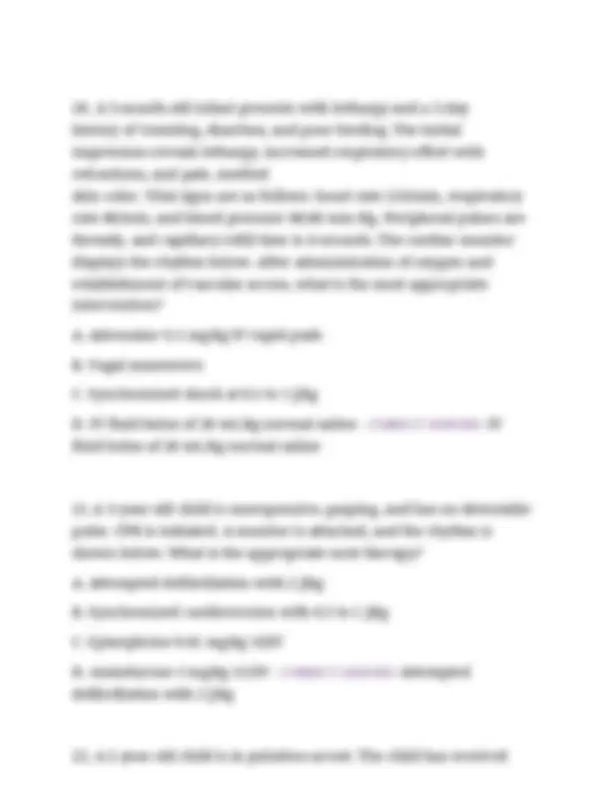

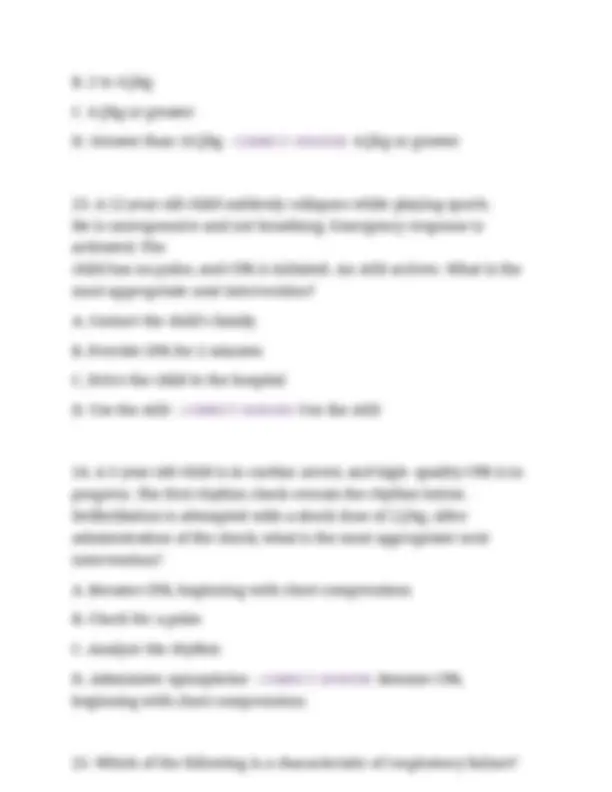

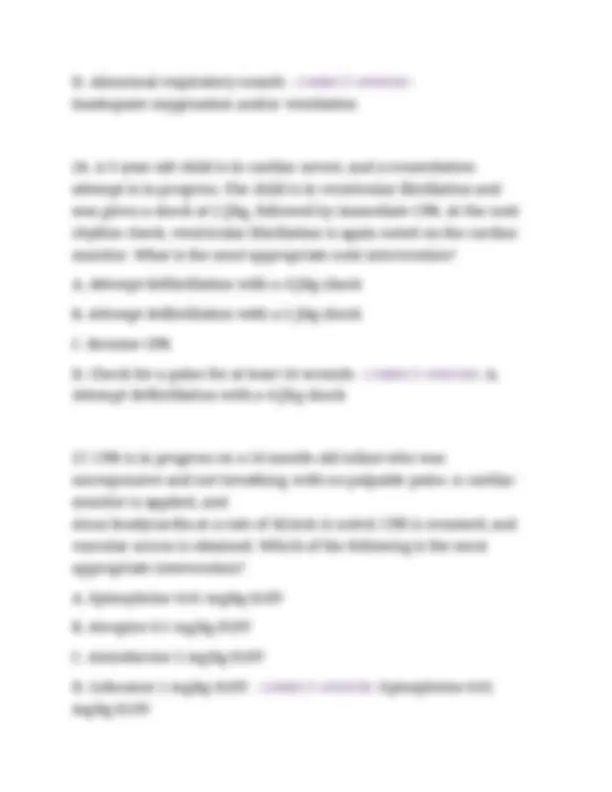

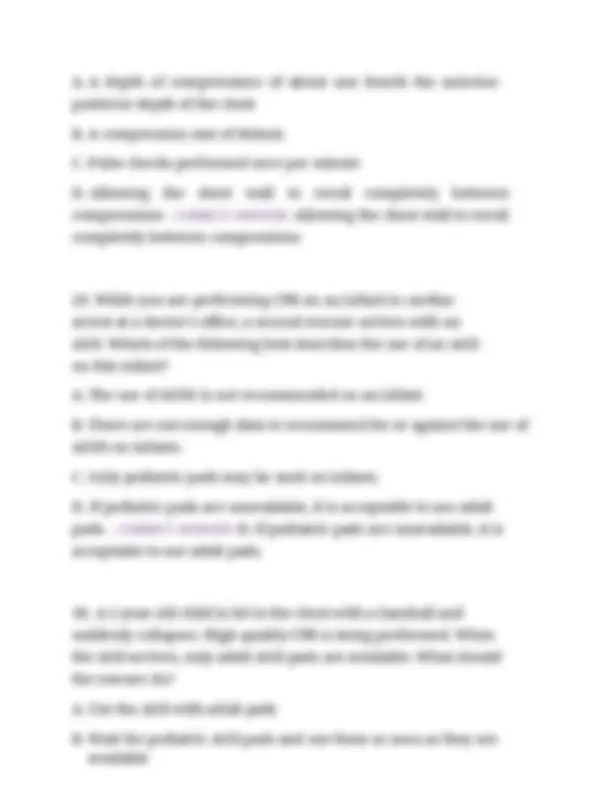

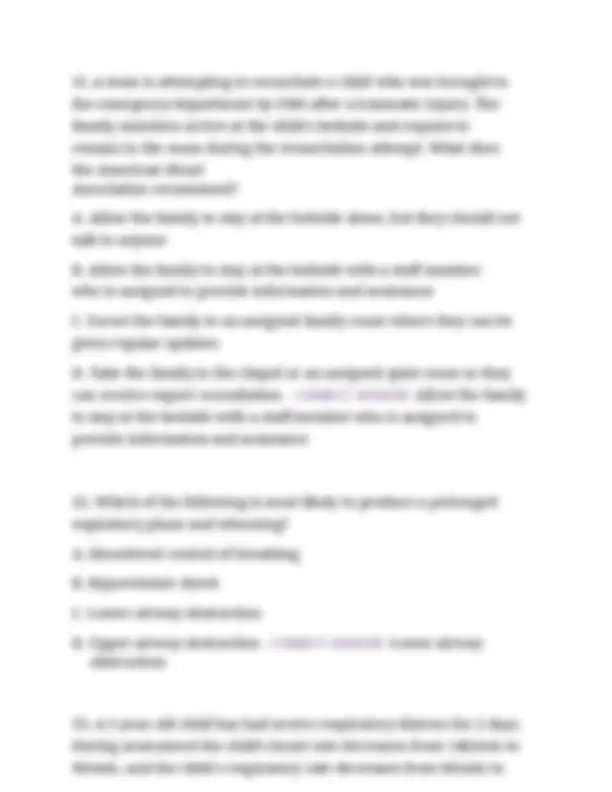




Study with the several resources on Docsity

Earn points by helping other students or get them with a premium plan


Prepare for your exams
Study with the several resources on Docsity

Earn points to download
Earn points by helping other students or get them with a premium plan
Community
Ask the community for help and clear up your study doubts
Discover the best universities in your country according to Docsity users
Free resources
Download our free guides on studying techniques, anxiety management strategies, and thesis advice from Docsity tutors
AHA PALS EXAM 2025 ACTUAL EXAM QUESTIONS AND CORRECT ANSWERS WITH RATIONALES ALREADY GRADEDA+ AHA PALS EXAM 2025 ACTUAL EXAM QUESTIONS AND CORRECT ANSWERS WITH RATIONALES ALREADY GRADEDA+ AHA PALS EXAM 2025 ACTUAL EXAM QUESTIONS AND CORRECT ANSWERS WITH RATIONALES ALREADY GRADEDA+
Typology: Exams
1 / 44

This page cannot be seen from the preview
Don't miss anything!





































B. Hypovolemic shock C. Significant bradycardia D. Cardiogenic shock - CORRECT ANSWERS - Septic shock
B. Hypovolemic shock C. Lower airway obstruction D. Upper airway obstruction - CORRECT ANSWERS - Lower airway obstruction
D. Disordered control of breathing - CORRECT ANSWERS - Respiratory distress
C. Place a central venous line D. Place an intraosseous line - CORRECT ANSWERS - Place an intraosseous line
lethargic. What diagnostic tests or information should be obtained first? A. Arterial blood gas B. Serum potassium concentration C. Glucose
D. A 12-lead ECG - CORRECT ANSWERS - Glucose
B. Attempt vagal maneuvers C. Administer adenosine 0.1 mg/kg over 5 minutes D. Administer amiodarone 5 mg/kg over 20 minutes - CORRECT ANSWERS - Attempt vagal maneuvers
pacing/transvenous pacing - CORRECT ANSWERS - Administer oxygen and ensure adequate ventilation; be prepared to intervene further if heart rate
C. Isotonic crystalloid IV D. Methylprednisolone - CORRECT ANSWERS - Epinephrine IM
He is unresponsive and not breathing. Emergency response is activated. The child has no pulse, and CPR is initiated. An AED arrives. What is the most appropriate next intervention?